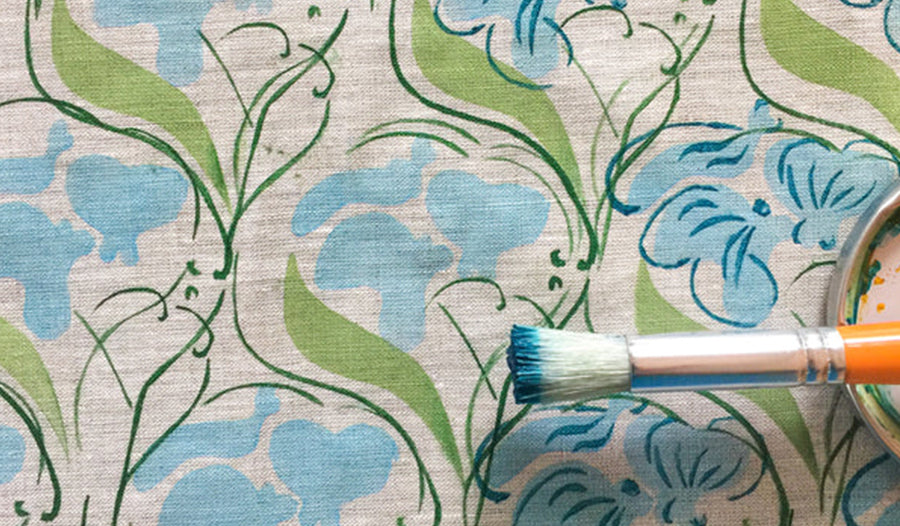
PRINTING PLANTS

Self-taught fabric printer Pauline Greuell has always been a lover of floral prints. Having recently been following a self-imposed practice of 'printing plants and weeds' (view her Instagram hashtag on the subject #printingplantsandweeds), she wrote this blog post about how the challenge has encouraged her to discover new ways of approaching floral and botanical prints.
In the many days of our lockdown this year I have been taking daily walks near our house, into the fields and through a little wooded area. As spring blossomed and turned into summer I discovered new plants and flowers every day by the roadside. I took some of them home, started a sketchbook and used the sketches to design new prints. I also used plants that were growing in our garden.
I found that the process of design really started even as I was walking. I looked really closely at the plants that stood out to me and observed where they grew and how. There was often one characteristic that stood out to me most. For example the hawthorn bush grows in a really dark spot in the wooded area of my walk. When they started to blossom the lightness of the blooms really stood out. They were like little lights amid the dark leaves. So that would be the intention of my design: showing this lightness and the contrast with the darkness of the leaves. For the dandelion it was similar: as they start to bloom a whole field lights up with this golden yellow that is so beautiful, so here is was the colour that would be the focus.
I also loved the grasses because of their movement with the wind or breeze and would try to catch that in my prints. The wig tree or smoke tree has such a lovely contrast between the dark and solid shape of the leaves and the airy almost floating quality of the blooms, which was not at all easy to reproduce.

After I took my cuttings home there were new things to notice. I put them in a jug on my desk and I would look more closely at the way the plant grew. For the clematis I noticed the elegance of the sprigs that wound their way around the wooded stem always turning their leaves and flowers in one direction only, so I used that as the basic idea of my print.
Some flowers, especially the more elegant ones like the iris, reminded me of a design style, in this case Art Deco. This made me look into this style and see how my iris would look in an Art Deco print.
I’ve made about than 20 printed patterns and I still continue to make them at a slower pace. The practice has brought me three things: a much deeper way of looking at a plant and at its characteristics that go beyond the shape of the leaves and flowers; a way to stretch my technical skills both in making stencilled motifs and in making patterns; and finally, has given me a collection of printed patterns that is representative of this strange time spent in nature.
Of course, making all this new work has also influenced my teaching and I’ve been teaching bits and pieces of it in my current Complete Stencil Printing Course, but I’ve also had some requests to teach workshops specifically about printing plants and flowers. I’m going to love that!
Read more of Pauline's blog posts, and find out more about printing practice here: www.paulinegreuell.com

We're delighted that Pauline will be teaching an online workshop about stencil printing for Selvedge on 2 & 3 April 2022. We are planning to run this class again in the near future. Visit the workshop page to express your interest and add your name to the waiting list.
In the meantime, explore the rest of our upcoming programme of workshops here:

